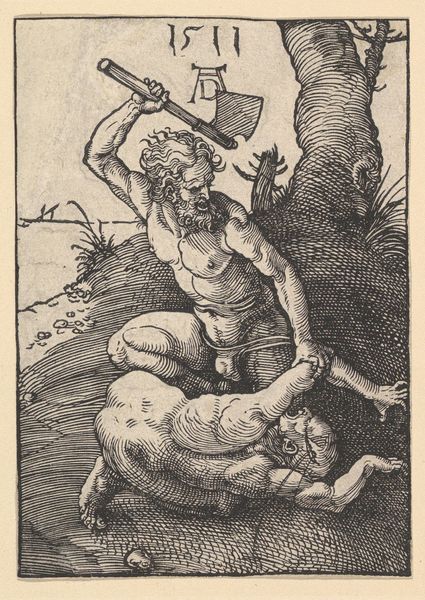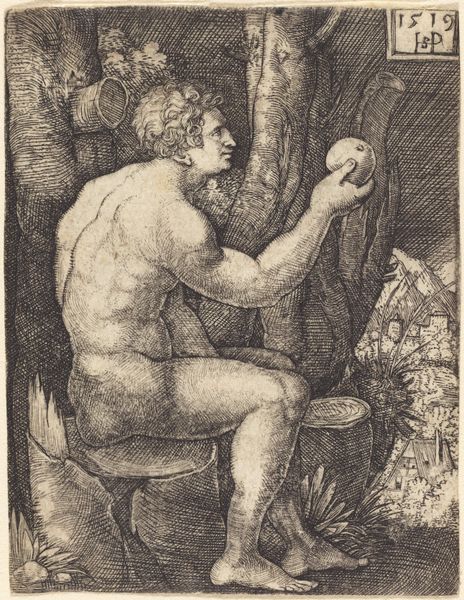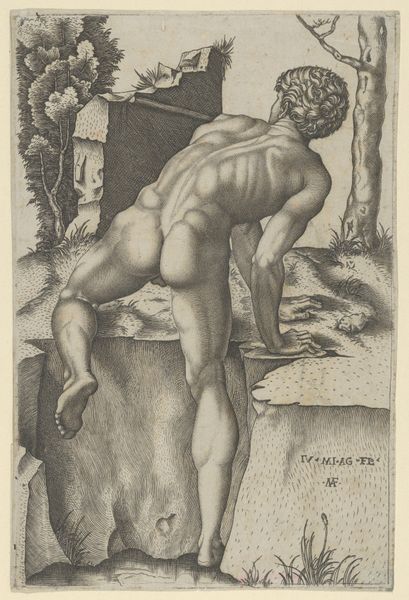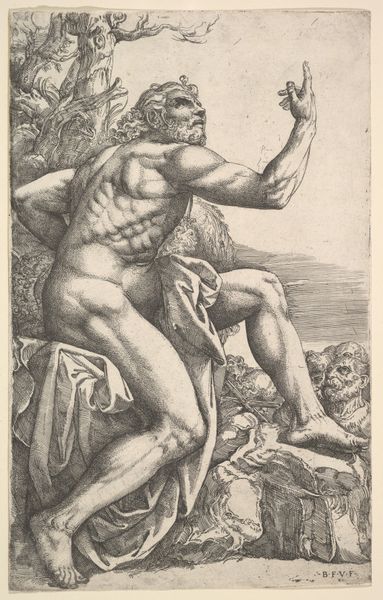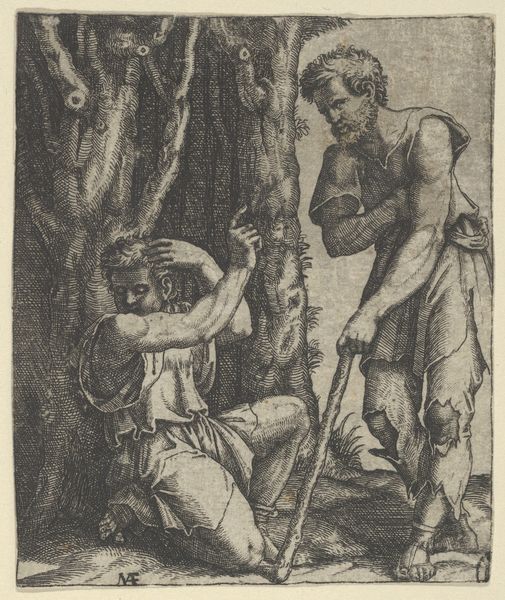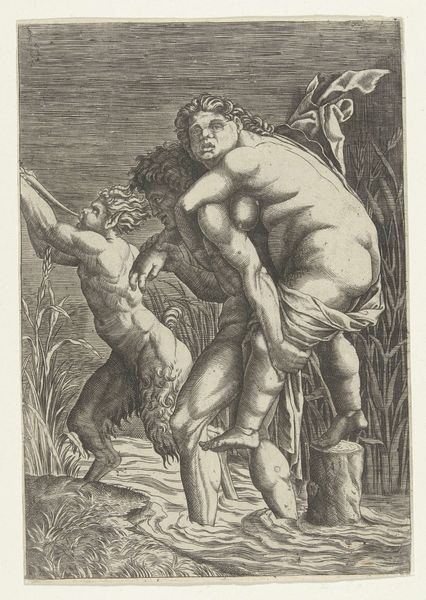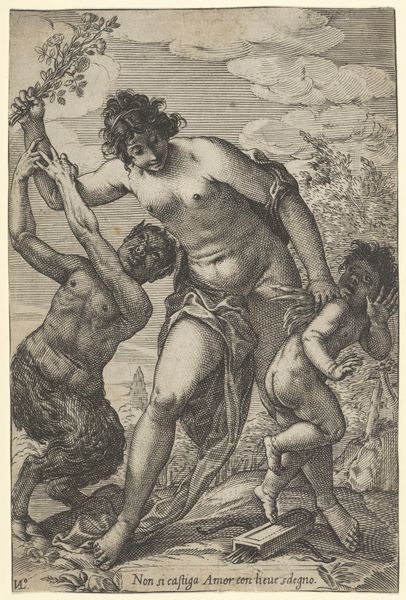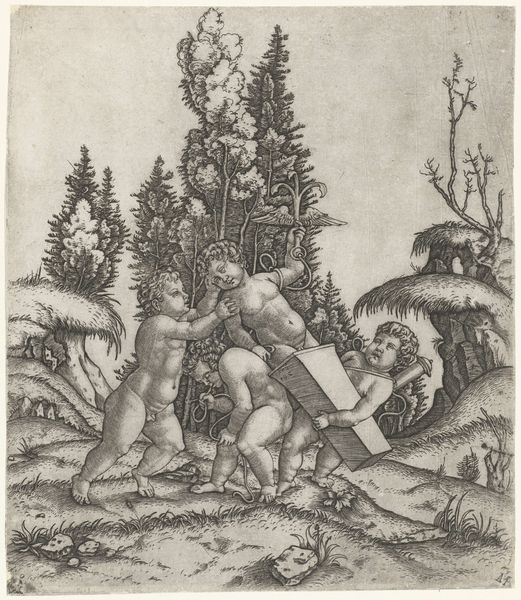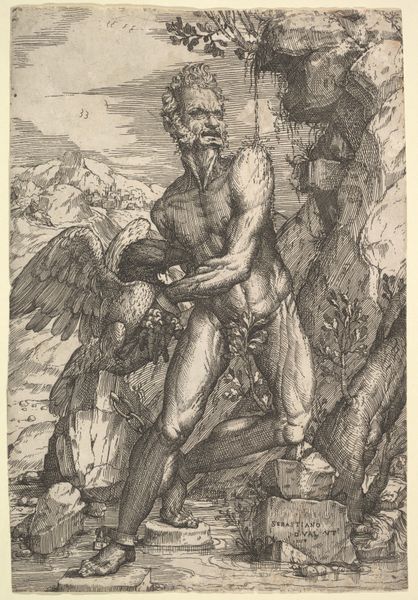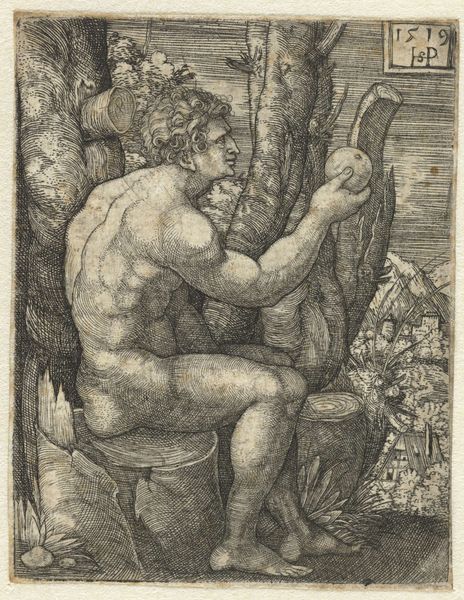
print, engraving
#
ink drawing
#
pen drawing
# print
#
figuration
#
history-painting
#
northern-renaissance
#
engraving
#
realism
Copyright: National Gallery of Art: CC0 1.0
Sebald Beham created this engraving, "The Impossibility," in 1545, using a burin on copper. It depicts a straining, muscular figure attempting to bend a young tree, a futile act underscored by the word "Impossibile" above him. This print emerged from a Germany grappling with religious and social upheavals during the Reformation. Beham, known for his involvement with the radical, anti-establishment Anabaptist movement, often used his art to critique social norms and question authority. Here, the image creates meaning through the figure's Herculean effort, juxtaposed with the clear impossibility of his task. It serves as a commentary on the futility of resisting inevitable change, perhaps alluding to the crumbling old order in the face of new religious and political ideas. To fully appreciate this work, one might delve into pamphlets and theological debates of the time. Understanding its historical and social context allows us to see "The Impossibility" not merely as a depiction of physical struggle but as a powerful statement on the shifting sands of early 16th-century Europe.
Comments
No comments
Be the first to comment and join the conversation on the ultimate creative platform.
